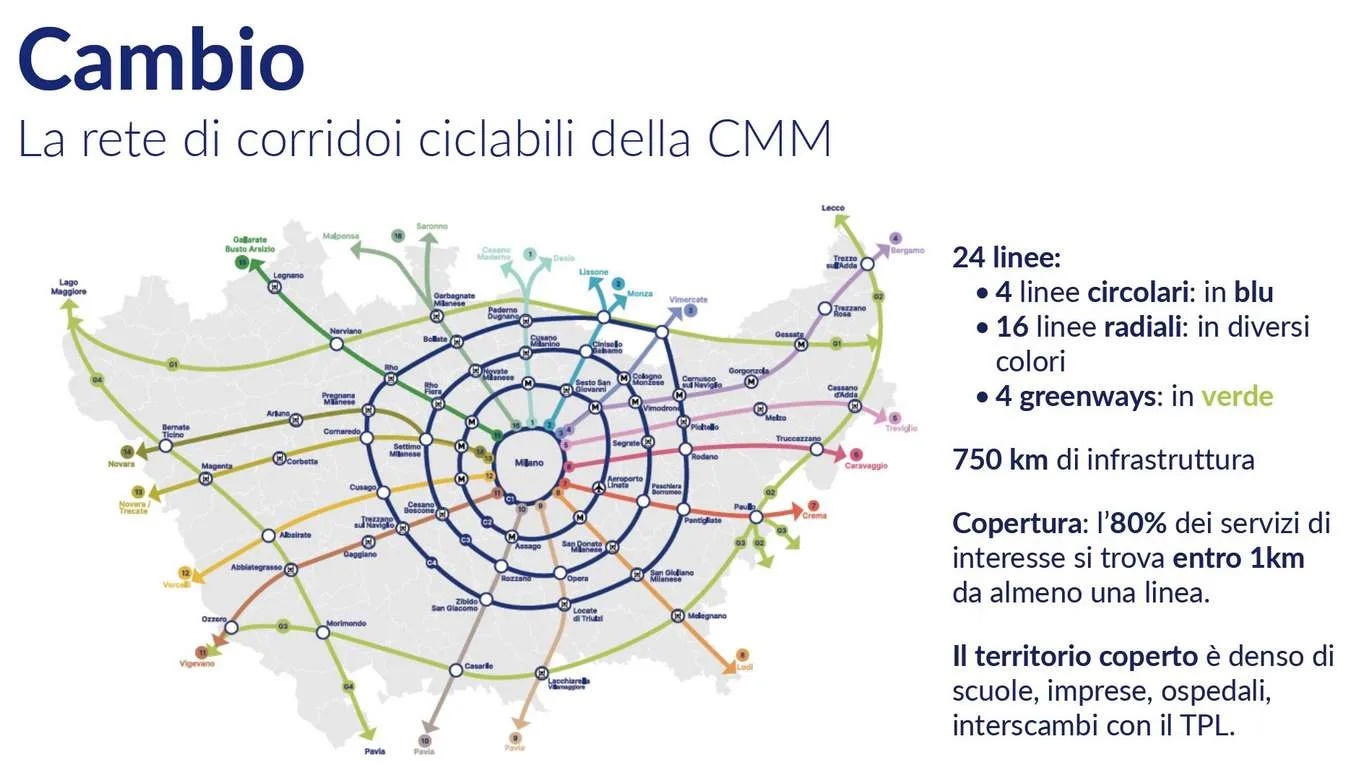Thessaloniki gets ready for its metro launch in November
The underground rapid transit lines have been under construction for almost two decades due to various project delays
 TheMayor.EU logo
TheMayor.EU logo From puzzle pieces to connectedness
Next month, it is expected that the first section of Milan’s new cycling mobility plan – Cambio – will break ground. This will be the first to create 750 kilometres of cycling roads connecting and interlocking in a thoughtfully designed web – quite similar to a subway system.
The ultimate goal? Make Italy’s economic capital a city that is a benchmark for sustainable micromobility and where at least 20% of the population would opt for that mode of transportation for their primary moving needs.
The Cambio plan itself was adopted on 29 November last year by the Metropolitan Council of Milan, but currently, there are still ongoing presentations in district municipalities. The budget planned for the large network will amount to 250 million euros and the expected horizon of completion is the year 2035.
The layout resembles an intricate spider web that will connect the city core to its suburbs and from there extend to the surrounding municipalities. It will feature 4 ring roads, 16 radiating lines and 4 greenways.

A map of the Cambio network superimposed over the Milan metropolis. Source: Milan Municipality
The idea is that 80% of essential urban services relevant to Milanese residents will be located no further than 1 kilometre from any given line on the network.
“Over the next few years, we will invest around 250 million euros to create a capillary network of cycle paths that will integrate with other existing modes of travel. The aim is to bridge the gap we have with respect to the most virtuous European metropolitan areas. This will lead to fewer emissions and traffic, but also more road safety since cyclists and motorists will not have to share the same roadway,” explained the delegate councillor for mobility of the Metropolitan City, Beatrice Uguccioni.
The high-speed cycle paths of the Cambio network will be equipped with optical fibre to offer citizens smart solutions through the use of some of the most innovative applications that this infrastructure allows, from low-impact lighting system (at night it will light up when cyclists pass nearby and recharge during the day) to information provided in real-time (thanks to displays placed along the routes).

The underground rapid transit lines have been under construction for almost two decades due to various project delays

Now you can get your wine in Talence by paying directly in Bitcoin

That’s because the state has to spend money on updating the railway infrastructure rather than subsidizing the cost of the popular pass

Rethinking renewable energy sources for the urban landscape

The examples, compiled by Beyond Fossil Fuels, can inform and inspire communities and entrepreneurs that still feel trepidation at the prospect of energy transition

Now you can get your wine in Talence by paying directly in Bitcoin

The 10th European Conference on Sustainable Cities and Towns (ESCT) sets the stage for stronger cooperation between the EU, national and local level to fast track Europe's transition to climate neutrality.

At least, that’s the promise made by the mayor of Paris, Anne Hidalgo

The underground rapid transit lines have been under construction for almost two decades due to various project delays

At least, that’s the promise made by the mayor of Paris, Anne Hidalgo

Hostal de Pinós is located in the geographical centre of the autonomous region

Despite its church-y name, the district has long been known as the hangout spot for the artsy crowds

Urban dwellers across the EU are having a say in making their surroundings friendlier to people and the environment.

Forests in the EU can help green the European construction industry and bolster a continent-wide push for architectural improvements.

Apply by 10 November and do your part for the transformation of European public spaces

An interview with the Mayor of a Polish city that seeks to reinvent itself

An interview with the newly elected ICLEI President and Mayor of Malmö

A conversation with the Mayor of Lisbon about the spirit and dimensions of innovation present in the Portuguese capital














